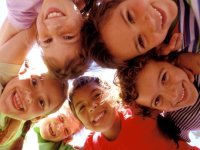Emotions are Contagious
Your content has been saved!
Go to My Saved Content.Through millions of pairs of lenses, we each see ourselves, others, and relationships from a variety of views. Each brings his or her inner world, unmet needs, emotional baggage, culture, and belief system into the human connection. So perhaps I shouldn't have been stunned a few weeks ago while reading the resiliency research associated with troubled youth inside our schools, when I encountered these words from Dr. Nicholas Long: "The number one reason for the increase in student violence in schools is staff counteraggression." Yet I was stunned.
A Spiral of Distress
When we find ourselves inside a youth's conflict cycle, which feels personal, oppositional, aggressive, and hurtful, we must find a way to step outside of this negative, swirling dynamic. If only for a few minutes, we must observe the possible downward spiral of emotions and words, and how these emotions affect us. To be self-aware is crucial in these blooming cycles of conflict. Dr. Nick Long states:
Many educators around the country are working in schools where children and adolescents are walking into classrooms in a state of basic brain survival. When we are in a state of simply surviving, our physiological, emotional, and social development experiences might include significant distress, creating elements of chronic anxiety. In many people, this anxiety has never been brought to the surface or worked through. And when it arises, it hijacks our biological ability to respond, self-reflect, or even simply understand the many consequences of our actions.
Chronic distress creates fear in children. This fear often looks angry, and teachers might experience that anger in classrooms as defiant opposition or aggression. Turned inward, it may present as detached helplessness and hopelessness. It is difficult to not personalize these negative behaviors and emotions as they enter our classrooms each day. Our biological anatomy is wired to mimic these powerful emotions, and as our survival instincts kick in, we begin feeling protective of our own well-being.
Developmental distress (large or small) is experienced in many our students' ordinary lives. Whether that distress is chronic hunger, lack of sleep, a broken sense of belonging, abuse, neglect, or simply feeling unsafe, these states of mind are real and present in our classrooms. As educators, we are called to be self-aware and reflect on these depleted physiological, emotional, and social needs. We are required to work beside complex behaviors, young minds, and hearts that are simply not focused on schoolwork. Students in distress cannot possibly learn an algorithm or constructive response because their basic survival needs and emotions are overriding the parts of the brain responsible for and intimately connected to learning.
Positive Interactions
What can we do when these damaging interactions stare us in the face and we feel the tangible heat of conflict rising to a point of no return? Through the years of working with many emotionally challenged youth, I have learned to quickly look for patterns and nonverbal signs that bring a gentle and brief dialogue to a potentially fiery encounter.
1. Recognize the Signs
Observe a student's changing tone, facial expression, and gestures. When we are sensitive and aware of our students' and our own verbal and nonverbal signs of emergent negative emotions, we are able to short-circuit a looming power struggle. Below is an example of a potential conflict that was shifted in minutes.
During small group work, a 12-year-old named Darren was flipping rubber band woven bracelets across the room. I observed for a minute and then approached him. He immediately scrunched up his hand and looked ready to defend his actions with his best warfare posturing. Standing by his side, I said, "Darren, can I see the colors of that bracelet?" He slowly and angrily opened his hand. "Darren, I love the yellow and blue combination. I am leaving on a trip tomorrow morning, and this bracelet matches both of my outfits! Could I borrow it before it snaps apart from being mishandled? I promise to return it on Monday safe and sound." He willingly gave me the bracelet, and the flipping and disruption immediately stopped. Since this time, Darren and I have found a mutually respectful way of being in our classroom.
2. Understand the Patterns
Notice patterns and possible causes of agitation before a behavior blows up. If there is no time to notice these, then quickly and privately suggest to your student that you both take a few minutes to calm down, agreeing to return to the conflict a bit later on. Sometimes we feel that we must give consequences right away, and this is actually counterproductive when anger and opposition rule the moment.
3. Model Self-Awareness
There is no better practice than modeling "how" to handle aggression by becoming self-aware and sharing our actions and words with students as they occur. Children and adolescents are experts at reading misalignment of words and nonverbal communication. Experiential learning at its best is being honest and informative, rather than being reactive.
4. Validate the Feelings
Validation is one of the most significant tools that we can implement inside a growing conflict cycle. When we begin to notice an upset, a growing aggressive and angry reaction, it can be very powerful to acknowledge the student's experience: "I cannot imagine how frustrating this must feel to you." When we validate another's feelings, we are listening to learn more. If we have not hit upon the student's feelings, he or she will let us know through the use of validation.
We demonstrate compassion and empower students to do their own problem-solving by detaching in a compassionate way and asking:
- What do you need?
- How can I help?
- What can we do to solve this problem?
This can begin leading student and teacher to improved well-being.
What methods have you seen that work in the classroom as we try to address these conflicts before they escalate? Please share your ideas, thoughts, and experiences.
